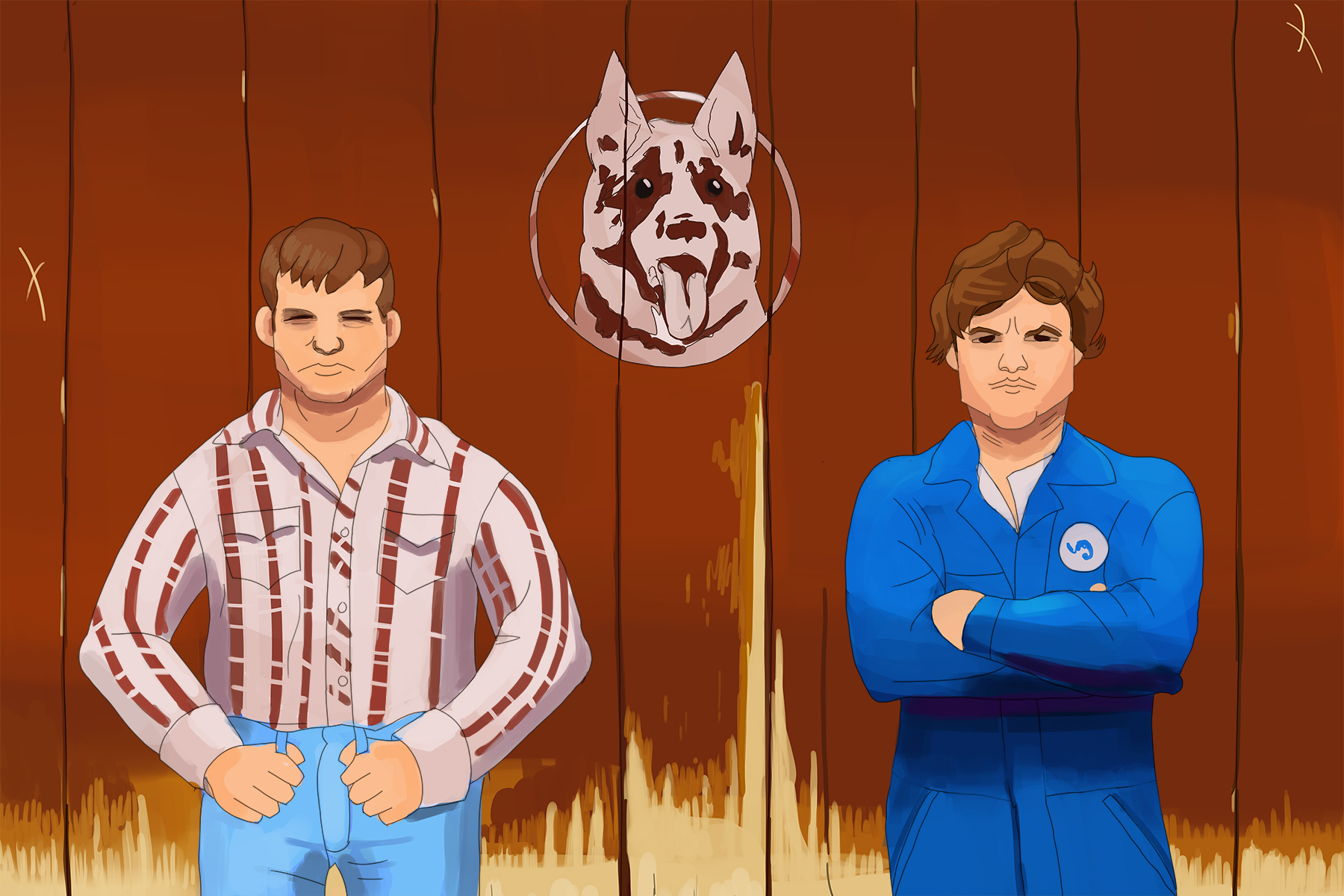Small towns are not very interesting. Major cities like Chicago, Boston and Philadelphia are all filled with history, architecture and diversity, so why would anybody choose to settle in a town with a low residential population? Maybe catching a few episodes of “Letterkenny” will answer that question.
As a YouTube web series turned Hulu-distributed TV show, “Letterkenny” is set in a fictional Canadian town of the same name. The first episode of the first season opens with a title card: “Letterkenny consists of hicks, Skids, hockey players and Christians. These are their problems.” This pretty much sums up what you can expect from the series.
Similar to its small-town quaintness, the premise of the show is simple and focuses on a farmer named Wayne (played by series creator Jared Keeso) along with his sister Katy and friends Daryl and Dan as they live their day-to-day lives in Letterkenny. It might not sound interesting, but remember what “Seinfeld” was about: a comedian named Jerry living his day-to-day life in New York City.
As you watch more of “Letterkenny,” viewers become acquainted with more of the town’s inhabitants. Like the opening card says, most of them can be divided up into those four categories: “hicks” are redneck farmers, “Skids” are strung-out druggies, “hockey players” are simply arrogant hockey players and “Christians” are represented by one very odd pastor.
The show has been compared to the critically-acclaimed animated series “King of the Hill” considering that both series follow rednecks in small towns and prefer sharp writing and character relationships to traditional plot structure. Furthermore, “Letterkenny” and “King of the Hill” prove that overlooked communities are worth satirizing.
The opening scene of the first episode gives the viewer a really good idea of the show’s comedic stylings. But you might have to watch it more than a few times. The actors do not have thick accents, but they do talk fast and use a lot of localized slang. The show’s dialog is quick-witted and carefully written, so it might help to learn some of the terms before diving into the show.
Admirably, “Letterkenny” uses character relationships to build the foundation of the series. There is no long-term, overarching plot to keep the viewers invested, so the show uses the interplay between Wayne and his friends to keep your attention. As such, the writing provides a dynamic to every character.
For example, over the course of the first scene, the audience learns that Wayne has lost his girlfriend because she cheated on him and that he does not fight anymore. Viewers also pick up on the fact that the two characters ridiculing Wayne are dating his younger sister.
More than anything else, the jokes in “Letterkenny” are all over the place in the best way possible, although edgy remarks are the most frequently used. The character making jokes at each other, called “chirping,” is the most common. Outside of the insults, the writers of the show get creative with the humor. Stepping outside of traditional jokes, the writers use a single cold open to provide exposition and use dynamic alliteration to deliver the lines. This alone should be considered a feat in TV writing, and the bouncy dialog is performed flawlessly by Keeso.
Another standout characteristic of “Letterkenny” is its incredibly open-minded characters, which can be observed through recurring characters like Tanis, a member of a Native tribe who lives on a reservation near Letterkenny. Her character is the boss of a gang who sells bulk cigarettes and does not always get along with Wayne. Tanis is unreservedly open about her sexual desires, which is something that this show never once condemns.
Relatedly, the polygamy between Katy — Wayne’s younger sister — and her two boyfriends Riley and Jonesy is not commented on. The three of them are simply dating each other. Wayne disapproves, but only because he does not like the personalities of the two hockey players. The sexualities of just about every character are explored with no judgment, even when one character, Gail, passionately displays her exaggerated sexuality — all the time
Nevertheless, despite its constant flow of jokes, “Letterkenny” manages to incorporate poignant character moments. Although the majority of them are subtle, the writers pay attention to the aforementioned moments and use them to grow the series’s characters. The show also comments on problems facing rural communities, with the most obvious example being the Skids.
It’s no secret that opioid addictions have become dangerously common in small towns, but it is not something that is commonly discussed. Stewart, Letterkenny’s local drug dealer, meth cook and EDM DJ is the primary representation of opioid addicts. In the first season, Stewart is a down-and-out druggie that can not take care of himself, but eventually evolves into an ambitious drug dealer. Granted, his actions are not morally correct, but the social commentary and character development should be noted.
Outside of the writing and performances, the soundtrack is surprisingly good despite the show’s low budget. Punk rock plays over high adrenaline fistfights and the tracks fit the theme of a gritty backwoods town. Additionally, scenes with the Skids often have loud house music playing over them, matching their confusingly high energy.
To summarize my opinions on the series, Americans appreciate benign Canadian comedy. Don’t diss elevated, educated, good, goofy, hysterical humor. Incredibly intricate jokes just keep killing. Let’s look. Most minds need nutrition. Optically, orally. Perplexing performances quantify quality. Ridiculous roasts saturate series. Troupes trip-up unconventionally, very verifiability. Watch warmly. Extremely excellent. Yes. Zenith. Zeitgeist.
















